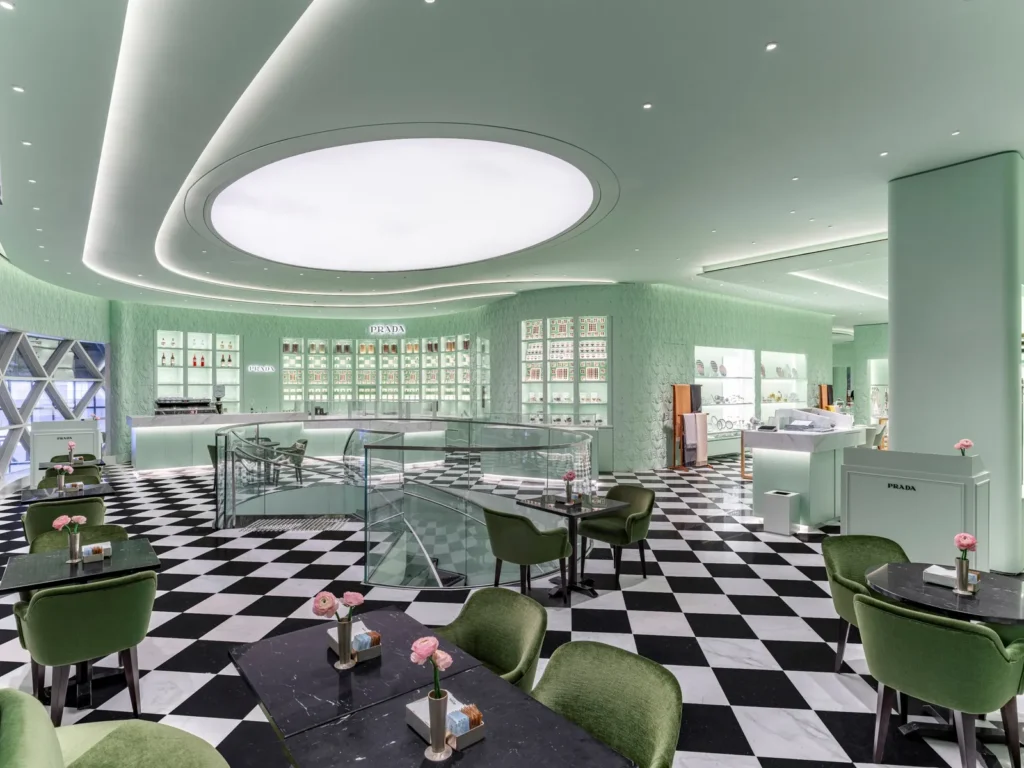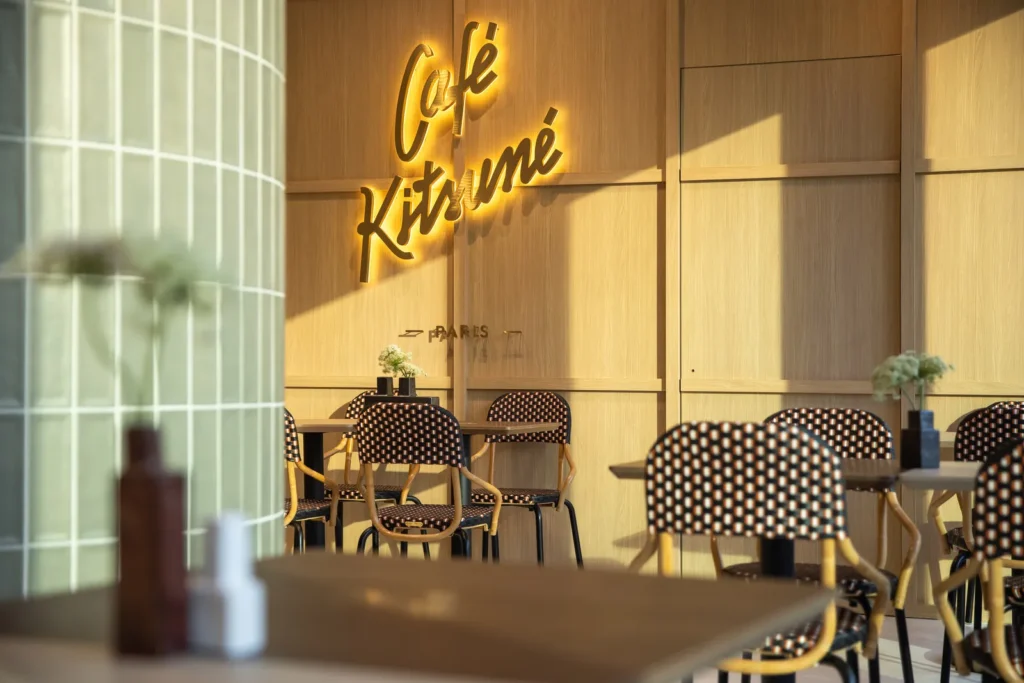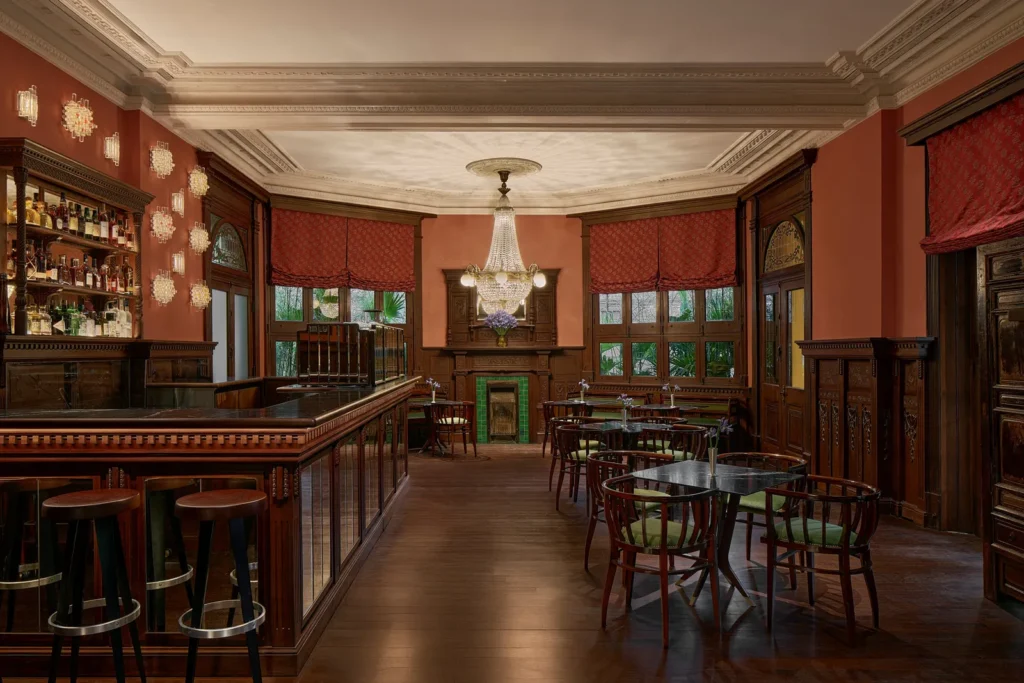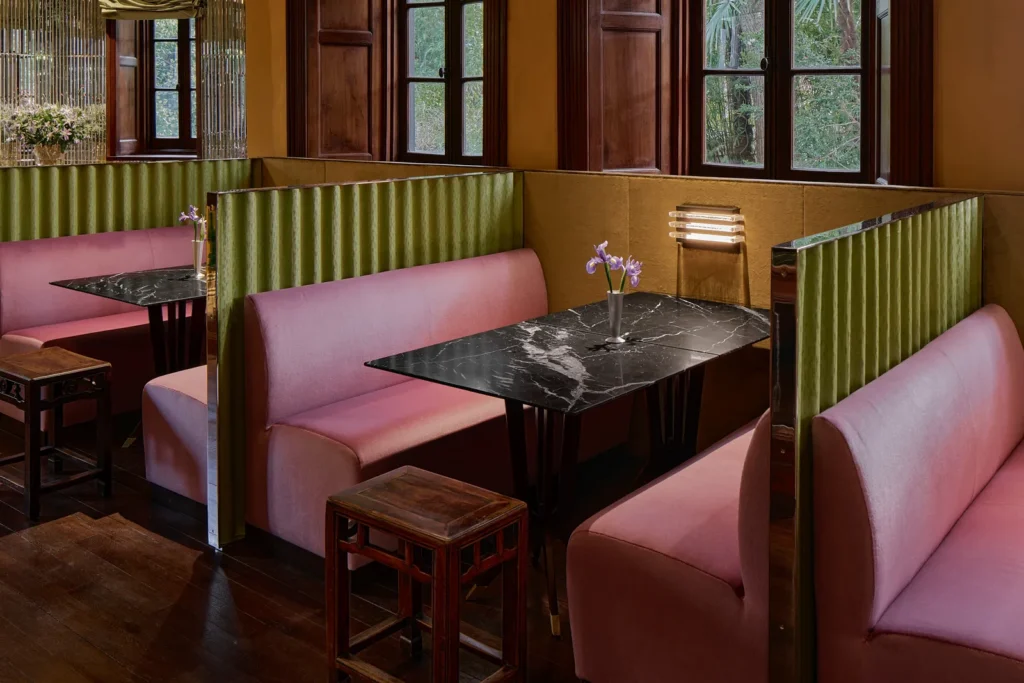Walk down any major fashion avenue today, and chances are you’re not just passing boutiques—you’re passing cafés. But not just any cafés: these are fashion houses turned lifestyle temples. Saint Laurent teamed up with cult sushi den Sushi Park for a Parisian pop-up that had both fashion editors and foodies scrambling for a seat. Prada brought its elegant Prada Caffè to Singapore. Tiffany’s Blue Box Café just landed in Taiwan. And yes, there’s a queue.

This isn’t just some whimsical crossover. It’s a strategic pivot—a stylish response to a shifting retail landscape and evolving consumer habits. Luxury brands are no longer just selling products; they’re selling atmospheres, feelings, experiences—and what better vehicle than food and drink?
Let’s rewind. Back in 1998, Giorgio Armani was one of the first to pair espresso with elegance, opening a restaurant in Paris. Ralph Lauren followed suit with RL Restaurant in Chicago—a wood-paneled, martini-sipping ode to Americana that later birthed The Polo Bar and Ralph’s Café. Today, Ralph’s hospitality arm spans 12 markets, proving this isn’t a fleeting trend—it’s a proven business model.
Since then, the runway-to-restaurant pipeline has grown. Prada snapped up Milanese patisserie Marchesi 1824. Louis Vuitton collaborated with Michelin-starred chefs for Le Café V. Chanel teamed up with culinary legend Alain Ducasse in Tokyo. Gucci’s Osteria, curated by Massimo Bottura, earned its own Michelin star. The goal? Turn flagship stores into immersive lifestyle hubs—part boutique, part bistro.
Initially, these spaces were for VIPs—private lounges for the monogram-obsessed elite. But the pandemic reshaped everything. With physical retail under siege and Gen Z’s expectations higher than ever, brands needed a fresh hook. Enter: the fashion café. It’s not just about serving coffee—it’s about serving culture.

Today, these cafés are Instagram catnip. Every surface is photogenic, every latte foam worthy of a post. Walk into Café Kitsuné, and you’re stepping into a curated moodboard—minimalist Japanese-French aesthetics and a killer matcha latte included. No wonder the brand spun its café arm into a standalone business contributing a solid chunk of annual revenue.
Nanushka’s boutiques in Budapest and New York house their own coffee corners, complete with custom ceramics. And Prada isn’t stopping at flat whites: its latest venture, “迷上 Prada 榮宅” (Mi Shang Prada Rong Zhai) in Shanghai—a haute dining experience helmed by filmmaker Wong Kar-wai—cements its place in the restaurant game.


Here’s what it all comes down to: not everyone can afford a luxury bag, but almost anyone can afford a slice of the fantasy. That $15 latte with a logo isn’t just a drink—it’s an entry ticket to a world of aspiration. It’s indulgence in miniature, a sensory shortcut to the brand’s universe.
So next time you’re sipping a Louis Vuitton-branded cappuccino, consider this: it might not just be a caffeine hit—it might be the first taste of a very expensive habit.
First published on gq.com.tw





